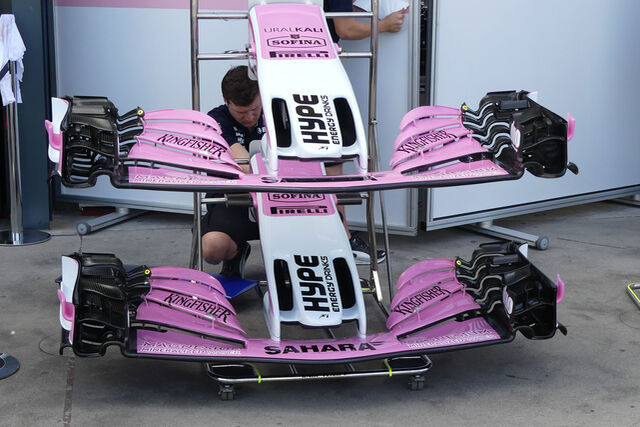Heres the link to the start of the posts for those interested:
viewtopic.php?f=6&t=26955&start=20
Vyssion wrote: ↑21 Mar 2018, 11:36Okay... lots of comments to read here - gonna add my two cents worth to the argu.... errr I mean discussion!!
I dug out one of the papers in my archive which relates to this type of thing. It was a paper called "Bionic Research on Bird Feather for Drag Reduction" where they performed a micro-scan of toucan feathers and then manufactured 3x surfaces (with 1x smooth surface) to kind of "replicate" the micro-structures.
Here is the scan below for you to see what they were based off:
What they decided to do was essentially push a sheet of metal through two rollers with one of them having tiny little riblets which would dig into the sheet metal to form little channels similar to what they scanned. This was then placed in a wind tunnel and tested against a smooth plate. Here is what they found:

Between a Mach Number of 0.4 and 0.9, there was indeed a noticeable drag reduction efficiency gain of the ribletted plates vs. the smooth plate with the most noticeable effect being dependent on the surface geometry vs. speed. You can see that at higher Mach Numbers, the effect actually ends up having a negative effect vs. a smooth plate. Similarly, you can see that as the Mach Number drops away from 0.8 to 0.4, the gains of some of the surfaces are less substantial.
This is important as far as this discussion because F1 cars at Baku (372 km/hr top speed as I recall seeing) still only just hit a Mach Number of ~0.3 (plus or minus some amount due to temperature/humidity, altitude, etc.) and so I feel kinda confident that, at least with a toucan feather microstructure, there wouldn't really be any significant gains to be had by implimenting this type of surface. It is made worse by the fact that the flow structures over the cars as they drive in a straight line are not always perfectly aligned with the direction of travel - let alone when they are cornering!! This paper doesn't go into yaw effects with aerodyanmics, but I feel okay saying that your benefit would probably drop off at least by some amount.
My guess as to what is happening is that the little vortices which are induced within these channels have a "reduction" effect on the shear stress within the airflow. They probably induce a tiny increase in pressure though, simply due to there being more churning about on a surface with more surface area etc. Both of these would reduce the skin friction drag by a fair bit.
TLDR; too complex to impliment in a way which works for all flow conditions/directions which doesn't have some amount of flip-flopping between working and not, and the fact that most gains to be had are outside of the speed ranges of F1 cars. The other thing is that all of this skin friction drag reduction etc etc would pale in comparison to the drag reduction of something like a DRS system..................... oh right!! We already have those




